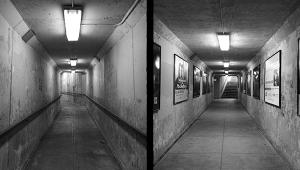A Canon EF 70 to 200 f2.8L IS USM Lens Album
While shooting stock images around historic St. Augustine, Florida, and closer to home during Veterans Day events, I used this lens extensively for people, birds, architecture, and various travel subjects to assess autofocus response, IS effectiveness, and optical quality. The new model met or exceeded my highest expectations in every category. Even when used with the Extender EF 1.4x II--a new/improved accessory with superior coatings and moisture resistance--the EF 70-200mm f/2.8L IS USM produced extremely sharp images with excellent color rendition. Optical Evaluation |
||||
Major Upgrades At A Glance
|
||||



































